Is forest management the key to drastically reducing wildfire risk? In this series, we talk to experienced foresters and firefighters about how to reduce the severity and frequency of forest fires, how to improve a wildland fire crew’s ability to put a fire out and what causes mega fires. In this first installment, Rayonier foresters (who are also trained firefighters) share how forest management reduces wildfire risk.
There’s no arguing that the West Coast has had catastrophic fire seasons in recent years. Wildfires have burned millions of acres across California, Oregon and Washington, leaving families grieving for lost loved ones, homes, businesses and even entire towns.
It’s excruciating to witness on television and social media and absolutely terrifying for those who live through it firsthand.
Many are left asking: how on earth did these fires get so large and out of control?
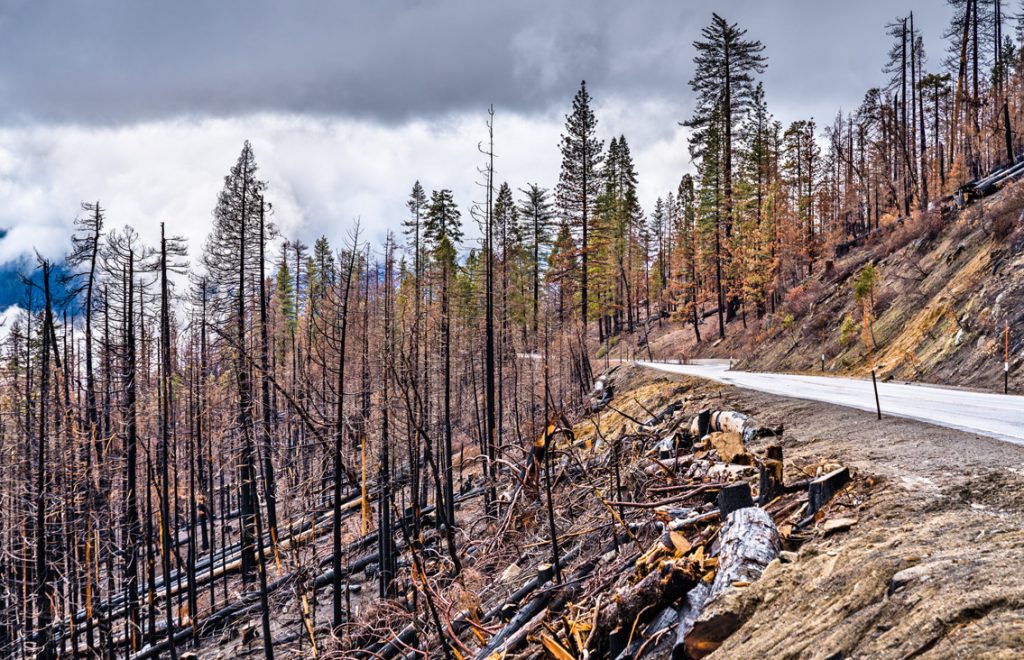
For answers, most of us turned to our trusted news outlets, where various experts, politicians and even celebrities weighed in with their opinions on the cause and who’s to blame. The focus was primarily climate change, high winds and weather, with some concerns about lackluster forest management thrown into the mix.
Could better forest management make a difference, reducing or even preventing mega fires in the future?
Two of Rayonier’s West Coast foresters who are experienced with wildfires and fire prevention share how forest management can and does prevent forest fires while maintaining the health of our precious forests and ecosystems.
What is Forest Management?
Forest management is a rigorous, methodical and time-tested combination of practices and technologies designed in part to reduce the severity and frequency of forest fires and mega fires.
According to our experts, before you can understand forest management in the context of forest fire prevention, you have to understand the different types of wildfires.
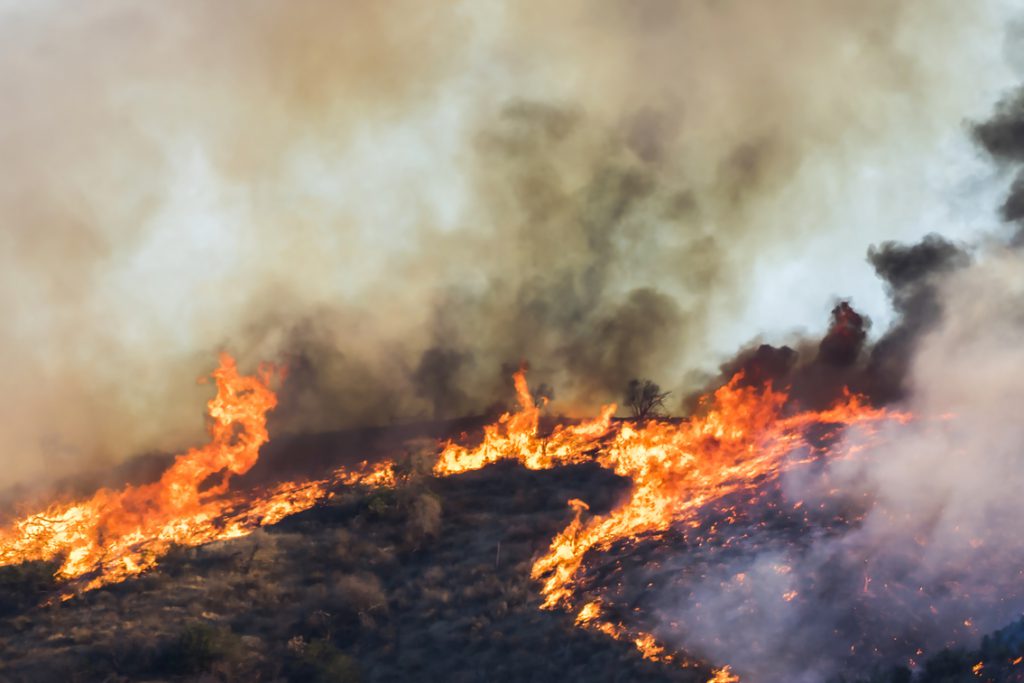
There are three key types of wildfires:
- Crown fires engulf the tops of trees and, with the help of high winds, can leap as much as a half mile. These are the most dangerous and difficult to control (this is what happened in Oregon in 2020).
- Surface fires only burn the surface of the landscape and are the least threatening because they are easiest to put out.
- Ground fires can burn beneath leaf litter, peat moss, and other debris, damaging the trees and even the soil. These are dangerous because they can go undetected for months and even smolder unseen until the weather warms up. Then they can become a potential source of a crown fire.
In a managed setting, like a Rayonier forest, a variety of forest management tools are used. Different fire conditions exist in different regions, and thus different management tactics are deployed.
See our video of our Southeast forest rangers team, which often deals with fires in marshlands, here.
Forest management tools we use in the Pacific Northwest include:
- Creating fire breaks, which are wide, open areas that can stop fire spread by the removal of the vegetation that fuels it. This is done with tractors or other heavy equipment.
- Properly spacing planted trees.
- Reducing vegetation which, if left unchecked, acts as fuel for a fire.
- Choosing root rot resistant trees, which are less susceptible to fire than diseased trees.
- Thinning forests, which is removing weak and diseased trees to give healthy trees more space.
- Controlled burns to reduce fuels.
- Monitoring the forest for pests and diseases.
- Fertilizing occasionally to strengthen healthy trees.
- Diversifying tree species.
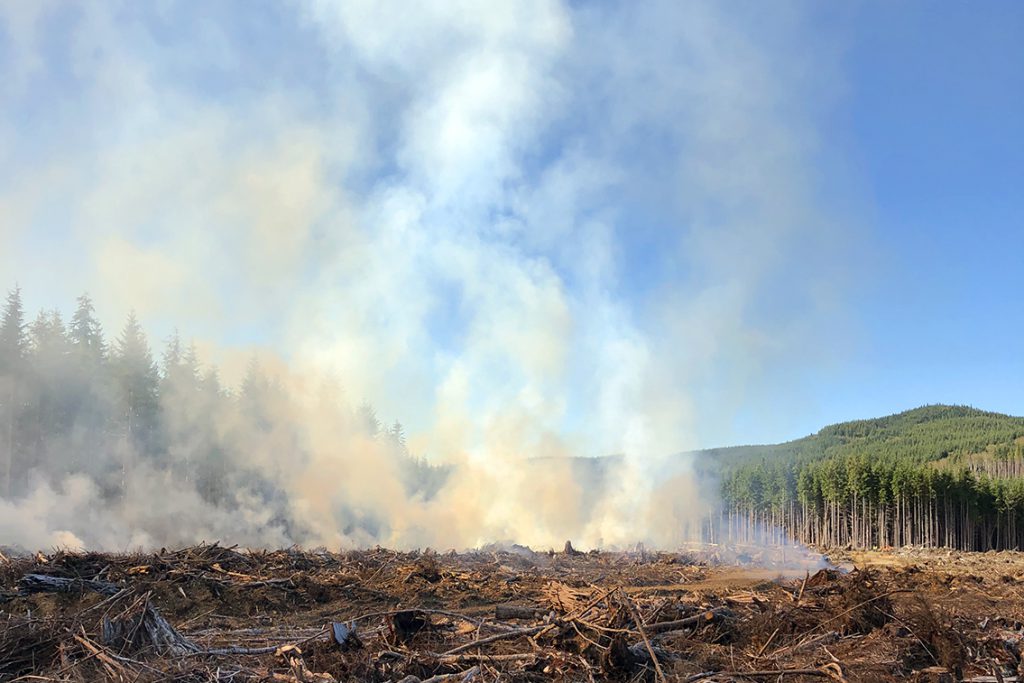
Why Healthy Tree Plantations are Less Likely to Burn
“Much of what we do to manage forests and prevent fires involves managing a healthy, fast-growing forest,” explains Rayonier Senior Resource Land Manager Jessica Josephs. “It’s like anything else: when you’re healthy and strong, you have the ability to avoid sickness like the flu. It’s the same for trees.”
Well-managed forests retain more moisture and resist damage from insects and disease
On a tree farm like Rayonier’s, trees are naturally bred and managed to resist insects and disease, making them less likely to die and dry out—which would make them prime fuel for wildfires. They’re also spaced apart in a way that optimizes their access to water, allowing them to hold a healthy amount of moisture.
“You’d be amazed,” Jessica says. “When we’ve had small wildfires, the fire will actually stop, especially in a young plantation. The trees hold so much moisture, they’ll either stop or slow the fire dramatically. And that’s even true of larger trees. When trees are healthy and functioning and translocating water, they can withstand a small fire.”
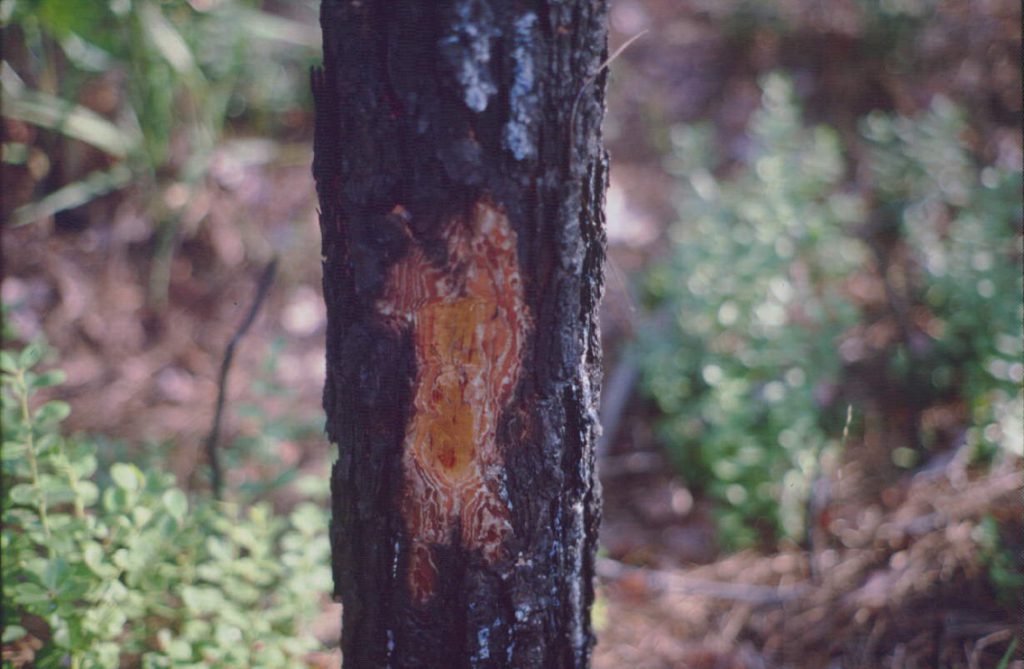
Thinning forests eliminates many of the weak trees that could fuel a fire
Neris Biciunas, a Rayonier Resource Land Manager, elaborates on Rayonier’s Pacific Northwest forest management practices: “We spend a considerable amount of money every year hiring contract crews to do a pre-commercial thin of forests. That reduces the number of trees in a younger stand (ages 10-20 years). We’ll go in and selectively cut down the weak or defective trees.
“Reducing the number of trees allows the whole forest to be healthier and grow vigorously so that the forest is less susceptible to fire.”
To learn more about thinning, watch our video, What is Thinning Trees, and Why Do Foresters Do It?
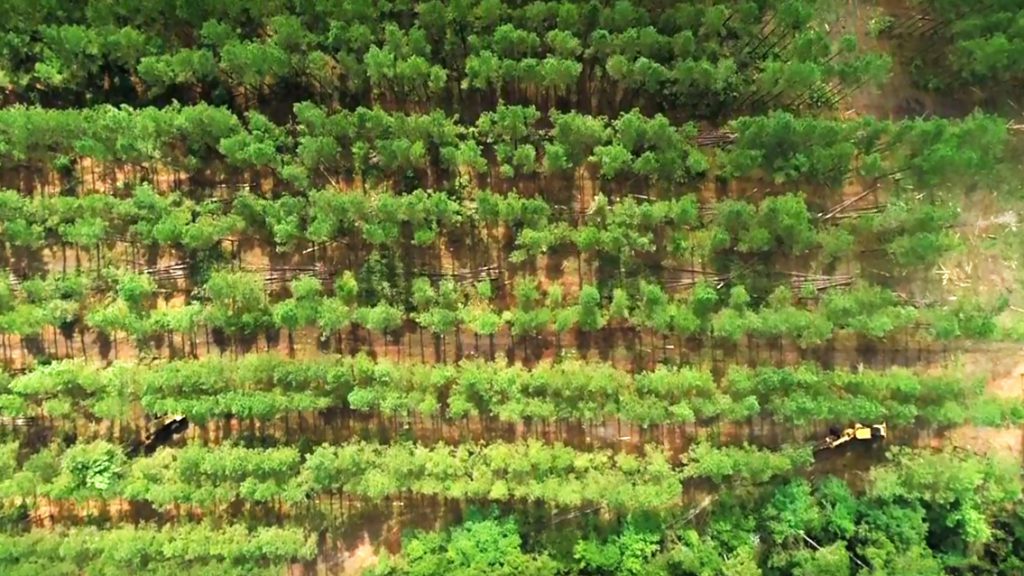
Controlled burning helps prevent mega fires
Controlled burns are a tool that has been used for many centuries to prevent fires. Today, working in concert with local fire officials, foresters and other landowners use small fires in specifically selected locations to rid the forest of flammable debris and underbrush.
“Every year, I burn slash piles,” Neris says. “In order to further reduce the fire risk, the loggers will make piles of leftover branches and treetops. Then in the fall and winter, when the burning weather’s appropriate, we will light those piles on fire. The ash and charcoal that’s left behind will nourish the soil, it reduces the fire risk, and I have enough space to plant the next healthy forest.”
The long history of prescribed burning
“Prescribed” or “controlled” burning is a forest management tool that was first used by Native peoples as a way to prevent large fires and create healthier forests. The practice is still widely used today, with an estimated 6.42 million acres of forests burned via controlled burning in 2017 per data reported in the global business data platform, Statista.
“Managed fire can be part of a healthy ecosystem,” says Neris. “Back in the 1930s and 1940s when fire was largely uncontrolled in the United States, that was the impetus for deciding to fight all wildfires aggressively.
“That’s when Smokey the Bear came along. Well-intentioned foresters were concerned that there was too much fire on the landscape. Smokey helped those foresters educate the public about how to prevent fire in the forest.
“Since then, we have learned many things about how a forest functions, and particularly how important fire is to a healthy ecosystem,” Neris says.
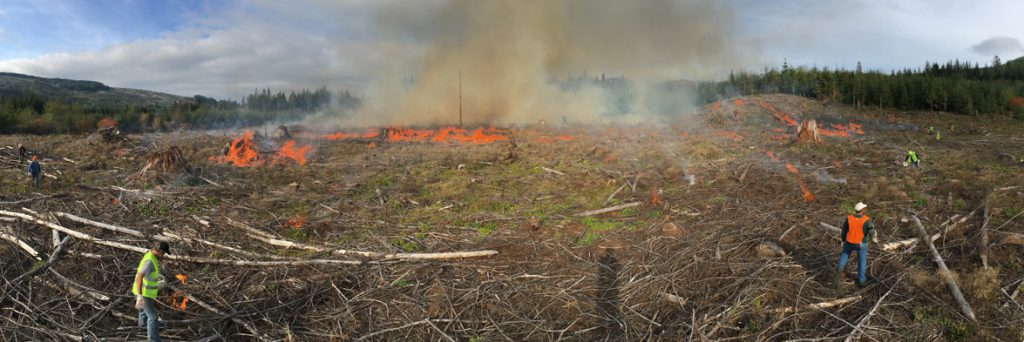
“Smokey’s message used to be ‘All forest fires are bad,’ but really, it would be more helpful to say something like: ‘We need to manage forest fires. Use fire where appropriate, put it out where appropriate.’”
Controlled burning is frequently practiced in the United States, but experts warn it’s not being used enough to prevent mega fires like the ones we’ve experienced in recent years. This was confirmed by a recent study published in the journal Fire entitled: We’re Not Doing Enough Prescribed Fire in the Western United States to Mitigate Wildfire Risk, which showed the number of prescribed burns in the U.S. has not increased in over 20 years. Quoted in news articles across the country, the study said the findings “suggest that the best available science is not being adopted into management practices, thereby further compounding the fire deficit in the Western U.S. and the potential for more wildfire disasters.”
An honest look at the risks and benefits of prescribed burns
For all the benefits of controlled or prescribed burns, you’re still dealing with fire in a forest, so there are risks. In some forests, some of the other methods listed above may be a more favorable choice to remove fuels. But prescribed burns have clearly made an impact in preventing mega fires.
“You don’t hear about the thousands of operations that went well, just the one that didn’t, Neris says. “With any opportunity there is risk. I am responsible for using fire as a management tool on many hundreds of acres every year. Other foresters on our team—and other landowners as well—are actively using it as a tool in the forest. Most people don’t even notice that it is going on.”
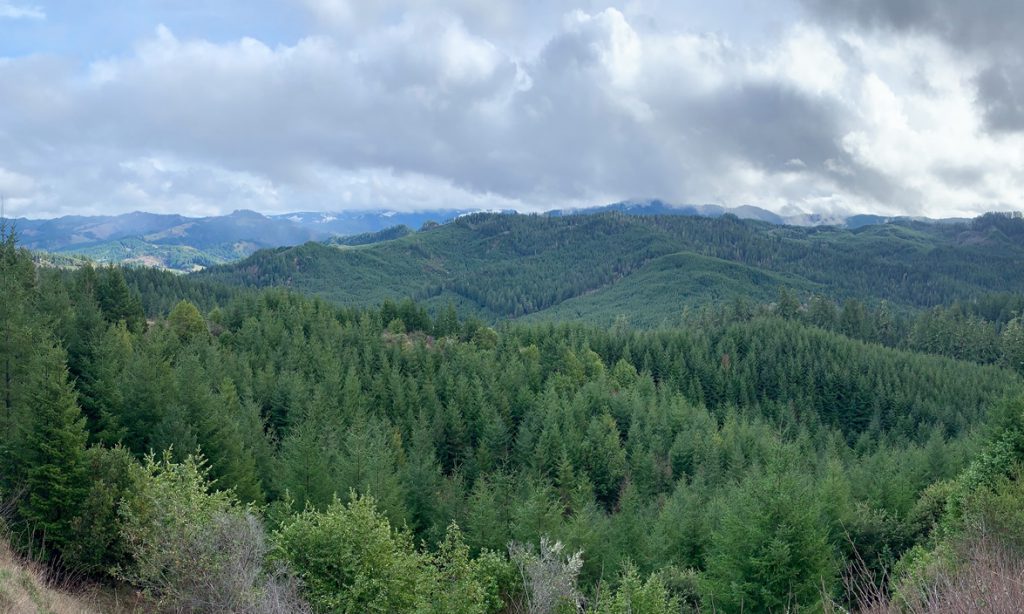
Healthy trees critical to fire prevention on private and public lands
Regardless of the method used, prioritizing the health of America’s forests is critical. In 2020’s devastating wildfire season, nearly half of the acreage burned was on federally-protected land. Since then, there have been renewed calls among experts and politicians to provide the support needed to improve forest health across the board by reducing fuels, addressing overstocked conditions, removing dead trees and treating disease and insect infestations.
Also in our Forest Management series:
Story #2: How Forest Management Helps Protect Firefighters. A fire manager from Coos Forest Protective Association in Oregon shares how managed forests reduce risks for those fighting a wildfire.
Story #3: Preventing Wildfires and Protecting the Environment Together. Firefighters, foresters and loggers each play a role in preventing and responding to wildfires. Interviewees discuss how technology has impacted wildfire response, the role of forest management in climate change, and how the forest itself adapts to fire.









Leave a Comment